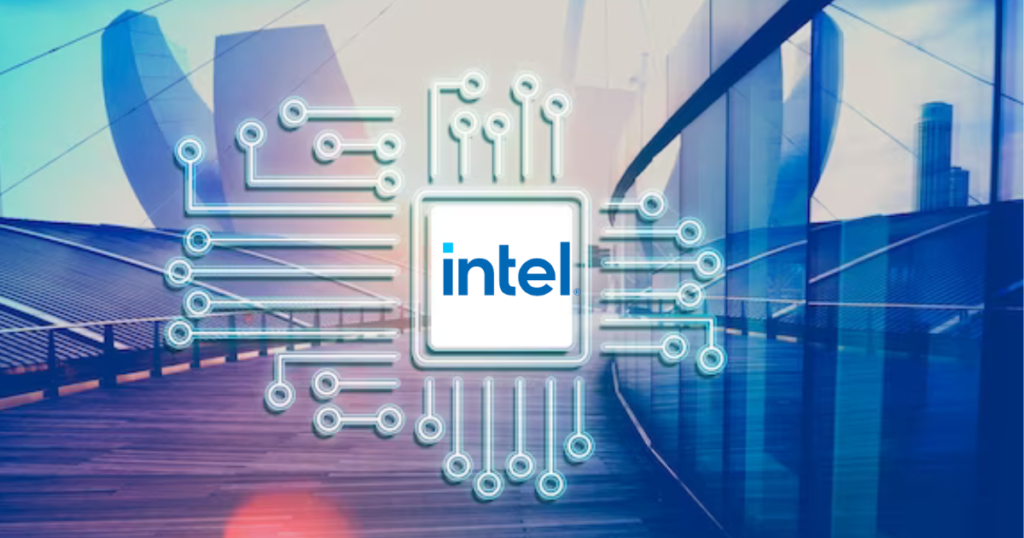Tech doesn’t exist in a vacuum. When a company like Intel shares a weak forecast, it’s not just a business headline-it’s a ripple that spreads across everything from AI research labs to the cloud servers hosting your favourite apps.
In its latest earnings call, Intel lowered expectations for near-term growth, citing slower PC recovery, ongoing trade tensions, and shifts in global chip demand. At first glance, this sounds like a Wall Street story. But in reality, it’s a window into the state of modern digital infrastructure-and where it’s heading.
Let’s unpack what Intel’s outlook really signals, how it connects to AI and data systems, and why these shifts matter for businesses, cloud providers, and anyone building in a digital-first world.
Why Intel’s Forecast Matters to More Than Just Chip Buyers
Intel isn’t just another tech manufacturer-it’s one of the backbones of modern computing. From powering laptops and desktops to fuelling hyperscale data centers, its chips sit at the heart of digital transformation.
So when Intel projects a slowdown, it’s often tied to broader challenges like:
- Geopolitical uncertainty (especially U.S.–China trade tensions)
- Supply chain instability
- A pivot in enterprise investment priorities-from hardware to cloud-native services
- The growing dominance of AI-optimized chips from competitors like NVIDIA and AMD
This isn’t just about Intel. It’s about how every layer of modern infrastructure is evolving to meet new demands-faster compute, smarter systems, and scalable, resilient platforms.

The Chip Struggle Behind the Cloud Surge
While Intel is navigating a tougher environment, demand for cloud computing and AI capacity continues to explode. Here’s the twist: the chips driving that boom aren’t just traditional CPUs anymore.
AI workloads-like large language models, predictive analytics, and deep learning-need specialized compute power:
- GPUs (Graphical Processing Units) dominate AI model training
- TPUs (Tensor Processing Units) are designed specifically for neural network operations
- Custom AI chips from companies like Apple, AWS, and Google are entering the game
Intel is catching up, investing heavily in AI accelerators like Gaudi 2 and ramping up efforts through TSMC partnerships to gain access to 3nm chip manufacturing-something they’ve historically handled in-house.
This shift affects everything: how cloud providers architect their data centers, how software teams deploy AI, and how businesses plan for data infrastructure resilience.
The Trade Tension Factor: Why Chip Supply Chains Are Shifting
One major piece of Intel’s cautious forecast is the impact of U.S.–China trade tensions. Export restrictions on advanced chip technologies are tightening, and countries like India, Vietnam, and Malaysia are emerging as alternative hubs for manufacturing and assembly.
This reshaping of the chip supply chain is forcing companies to:
- Diversify their data centers geographically
- Rethink vendor dependencies
- Invest in local infrastructure where regulations are more favorable
For businesses in regions like Pakistan, this is a wake-up call: global supply chains affect local uptime, cloud pricing, and infrastructure availability.
What This Means for AI and Data System Planning
The AI boom isn’t slowing-but the hardware it runs on is evolving fast.
If you’re building or scaling digital systems today, here’s what Intel’s forecast indirectly signals:
1. Plan for Hardware Volatility
Chip shortages and trade disputes could still cause disruptions. Work with providers that offer transparency about their hardware stack and multi-vendor support.
2. Watch the Rise of Specialized AI Compute
Expect more cloud platforms to offer AI-dedicated resources (like NVIDIA GPUs or AMD MI300X accelerators). If your workloads rely on AI, this matters.
3. Don’t Overlook Infrastructure Location
Where your data lives matters-especially as data sovereignty laws tighten. The best infrastructure isn’t just powerful-it’s compliant, local, and secure.
4. Hybrid Infrastructure is the New Default
Between performance, cost, and regulatory pressure, many businesses are going hybrid: some data on-prem, some in the cloud, some colocated in neutral data centers.
Final Thoughts: What Intel’s Story Really Tells Us
Intel’s forecast isn’t just a warning-it’s a reflection of the transition underway in digital infrastructure. Cloud providers, AI teams, and infrastructure leaders are all moving toward systems that are:
- More specialized
- More distributed
- More resilient
While chipmakers navigate a shifting landscape, your job is to make sure your systems are ready for the shifts too. That means understanding not just the software side of innovation, but the hardware and geopolitics powering it all.
Because at the end of the day, tech isn’t magic-it’s hardware, partnerships, strategy, and preparation.

